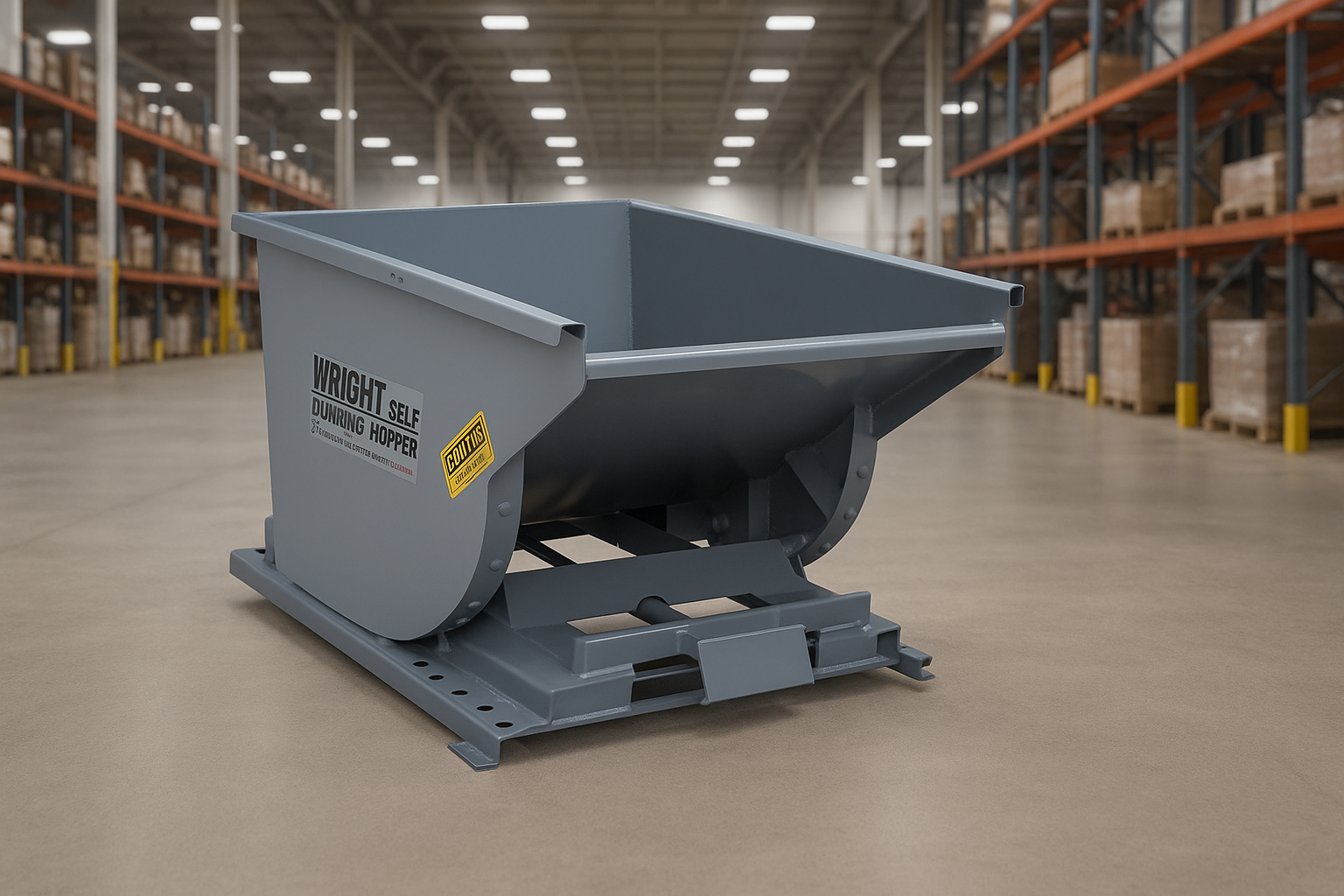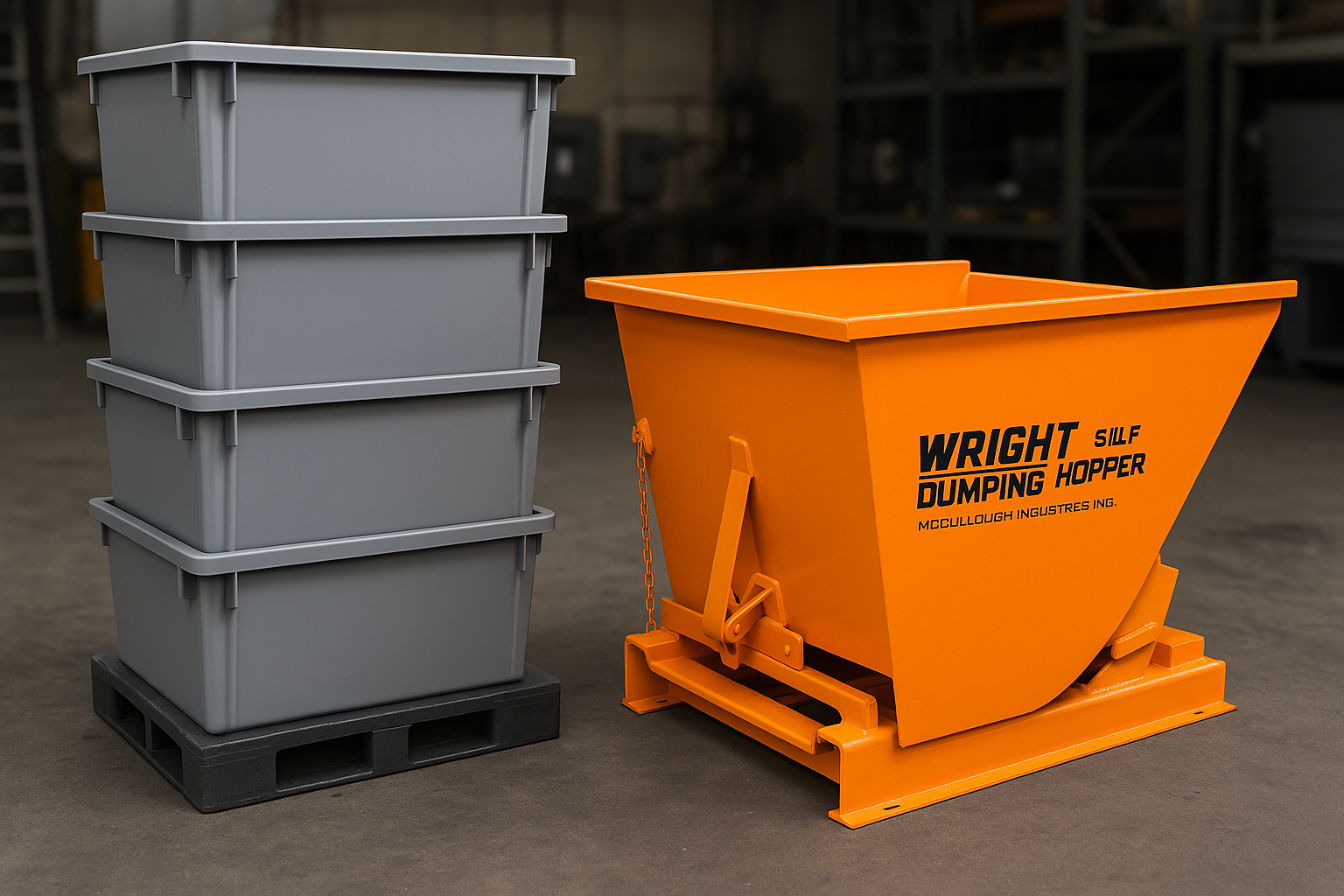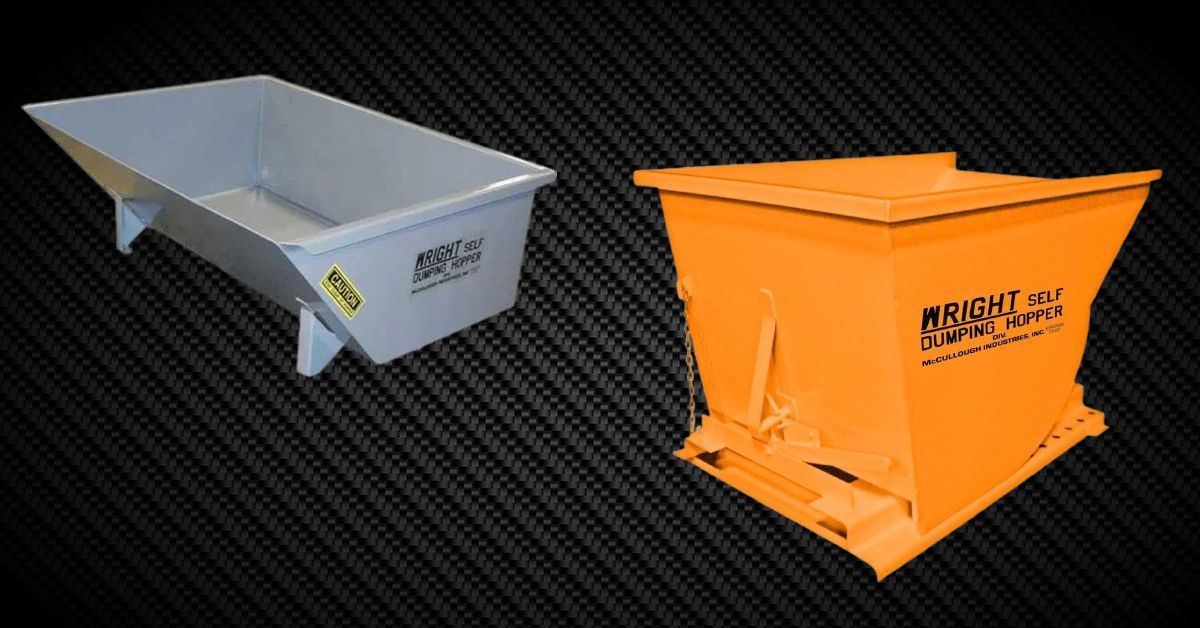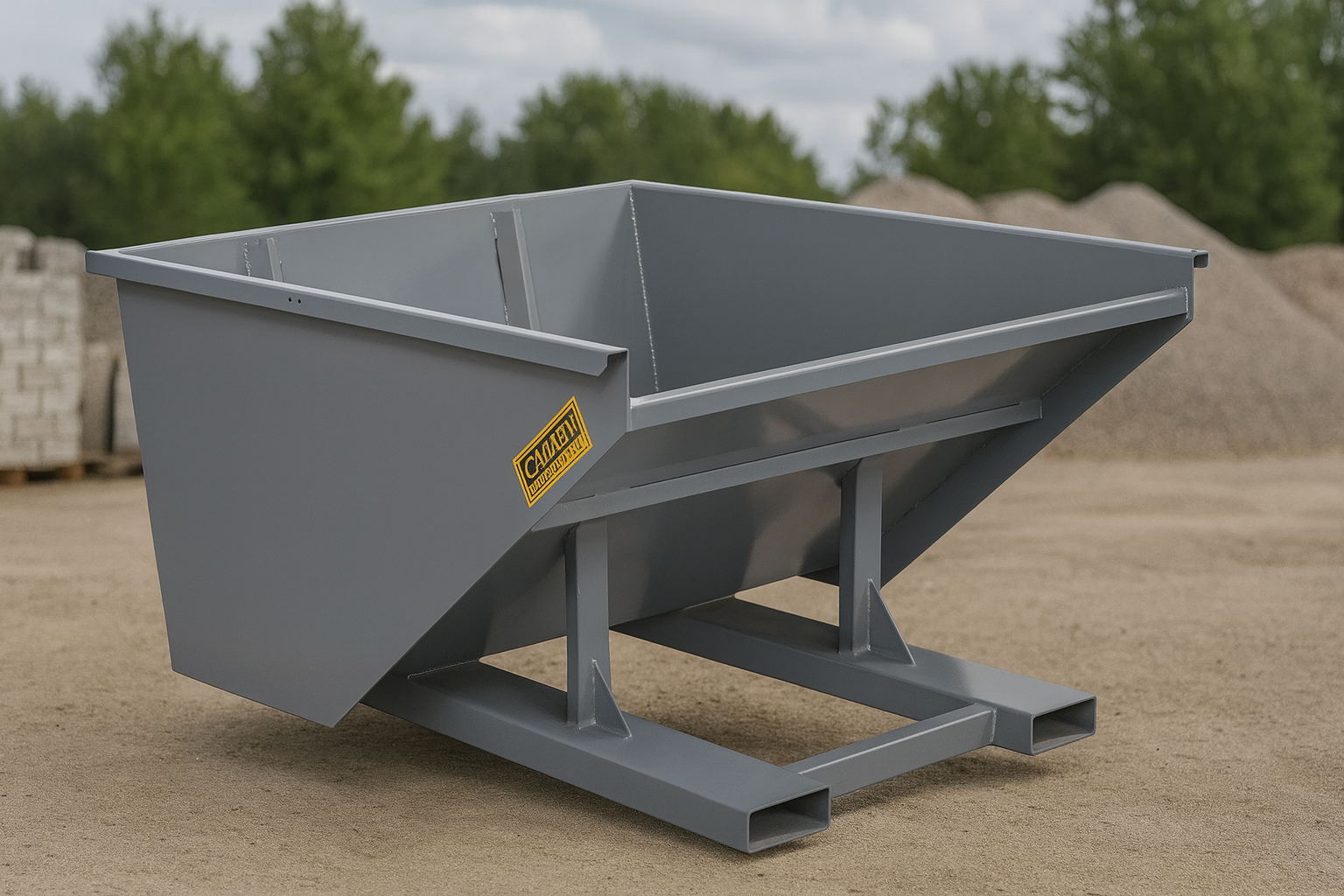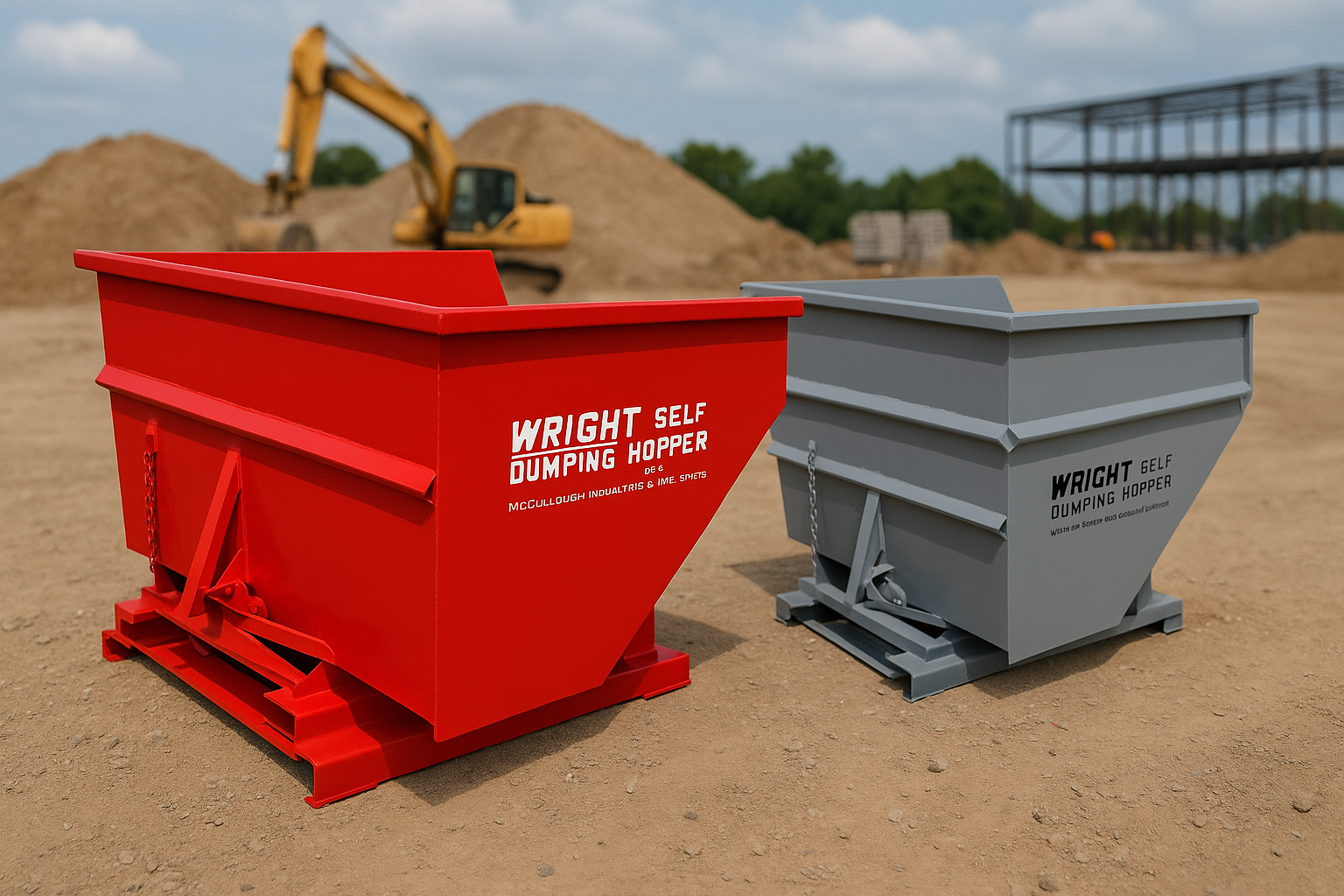
Why Hopper Size Selection Matters
Selecting the right hopper size isn't just about volume—it's about efficiency, safety, and workflow alignment. At McCullough Industries, we design our Wright® Self-Dumping Hoppers to meet the full range of industrial needs, from compact manufacturing cells to large-scale recycling facilities. Choosing the wrong size can lead to operational bottlenecks, wasted space, or even safety hazards. That's why we're offering this practical guide to help you select the ideal hopper size for your operation.
Understanding Hopper Size Basics Hopper
sizes are generally measured in cubic yards, with typical volume capacities ranging from 0.25 to 6 cubic yards. But the right hopper size depends on more than just volume. It also hinges on:
- Load density (material weight per volume)
- Dumping frequency
- Facility space and access points
- Material type and flow behavior
- Forklift or loader compatibility
Let’s look at how these factors influence your decision.
What Are Traditional Hoppers?
Wright® Self-Dumping Hoppers include the GEN II, Low Profile, Quick Attach, and Bump Release product lines. These hoppers automatically dump and return to upright position, reducing downtime and operator effort.
1. Volume vs. Weight Capacity: The Balancing Act
A large hopper may seem like the obvious choice for high volume waste but if your material is heavy (like metal shavings or concrete rubble), overfilling can lead to safety issues and equipment damage. MCI hoppers come with specific weight ratings to avoid overload risks.
| Hopper Model | Volume (cu yd) | Max Weight Capacity | Best Use Case |
|---|---|---|---|
| 3355 | 0.33 | 4,000 lbs | Light material, small spaces |
| 5055 | 0.5 | 5,000 lbs | General shop use |
| 10077 | 1.0 | 6,000 lbs | Medium scrap loads |
| 20099 | 2.0 | 7,000 lbs | Heavy-duty operations |
| 30099 | 3.0 | 7,000 lbs | Large waste volumes |
Always match volume to your typical material density. For example, 2 cubic yards of foam packing waste is not equivalent in weight to 2 cubic yards of brass scrap.
2. Dumping Frequency and Operational Flow
If your team dumps hoppers multiple times per shift, choosing a mid-size hopper that resets automatically (like the GEN II series) can improve productivity. A smaller hopper may cause delays due to frequent trips, while an oversized hopper may take up too much floor space or require more effort to maneuver.
3. Facility Constraints: Doorways, Aisles, and Ceilings
Tight working conditions call for Low Profile Hoppers. With heights starting at just 17 inches, these models can slide under worktables, conveyor systems, or production equipment. Measure your space carefully, including forklift travel paths, turning radius, and ceiling height at the dump site.
4. Material Type: Flow Behavior and Containment
Sticky or oily waste may not flow well in large hoppers unless properly angled. For chip-heavy facilities, smaller chip hoppers with sloped floors and sealed seams help prevent residue buildup. For bulky or irregular debris, larger open-top models might be more appropriate.
5. Equipment Compatibility
Consider what machines you'll use to move and dump the hopper:
- Forklifts: All Wright® Self-Dumping Hoppers come with standard fork pockets
- Rotators: Stackable Rotating Totes (SRTs) are ideal for rotator-equipped forklifts
- Loaders: Quick Attach Hoppers are best for field or rough-terrain work
- Overhead cranes: Ask about lifting lugs for vertical lifting applications
Matching Hopper Size to Industry Application
Different industries generate different types of waste in different volumes. Here’s how McCullough customers typically match hopper sizes to applications:
| Industry | Recommended Hopper Size | Common Hopper Type |
|---|---|---|
| CNC Machining | 0.33 to 1.0 cu yd | Chip Hopper, Low Profile |
| Sheet Metal Fabrication | 1.0 to 2.0 cu yd | GEN II, Bump Release |
| Warehousing | 1.5 to 3.0 cu yd | Low Profile, GEN II |
| Construction | 2.0 to 6.0 cu yd | Heavy-Duty GEN II |
| Food & Packaging | 0.5 to 1.5 cu yd | Stackable Rotating Tote |
Signs Your Current Hopper Size Isn’t Working
- Frequent overflows or leaks
- Too many trips per shift
- Strained forklift operations
- Floor space congestion
- Waste buildup or delays in disposal
These are red flags that it’s time to re-evaluate the size or style of hopper you're using.
Custom Solutions for Custom Workflows
If your operation doesn’t fall into a standard category, McCullough can engineer a custom hopper that meets your workflow. Whether you need:
- Extra-wide fork pockets
- Tilt-back frames for slow material flow
- Specialty coatings for caustic waste
- Compartmentalized hoppers for sorting
- High-clearance designs for dump height
...our team will design it with your specs in mind.
FAQs: Hopper Size Selection
How do I calculate the right hopper size for my scrap volume?
Start by measuring average waste volume per shift in cubic feet, then divide by 27 to convert to cubic yards. Factor in load density and dumping frequency.
Can I get a hopper that fits under my conveyor line?
Yes. Our Low Profile models are designed to fit tight vertical spaces with dump heights as low as 17 inches.
What if my forklift has non-standard fork spacing?
McCullough can modify fork pocket width and spacing to match your equipment.
Is bigger always better?
No. Oversized hoppers may be harder to maneuver and more dangerous if not filled properly. Efficiency comes from balance.
Let’s Size It Right
Don’t guess your way to a hopper solution. McCullough Industries has been helping industrial teams choose the right hopper for decades. We’ll help you size it right the first time so your team can work faster, cleaner, and safer.

